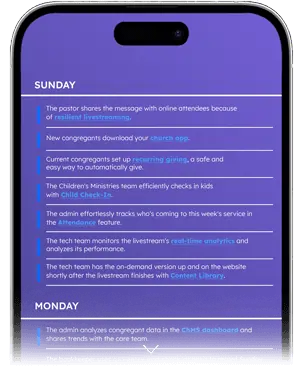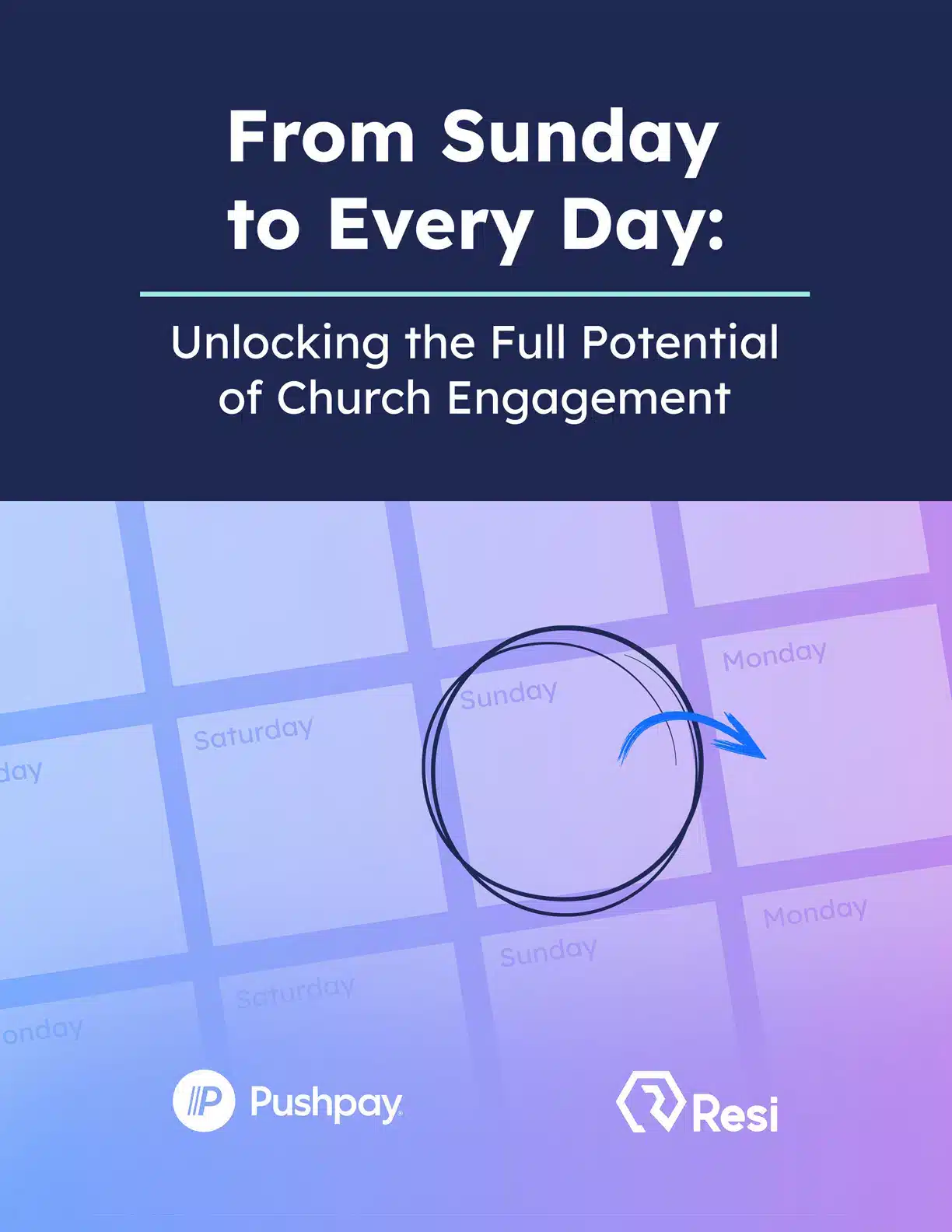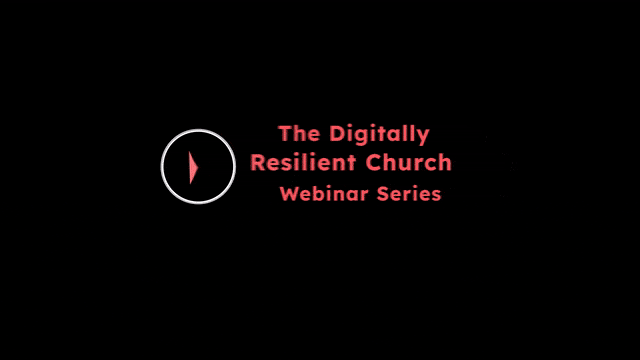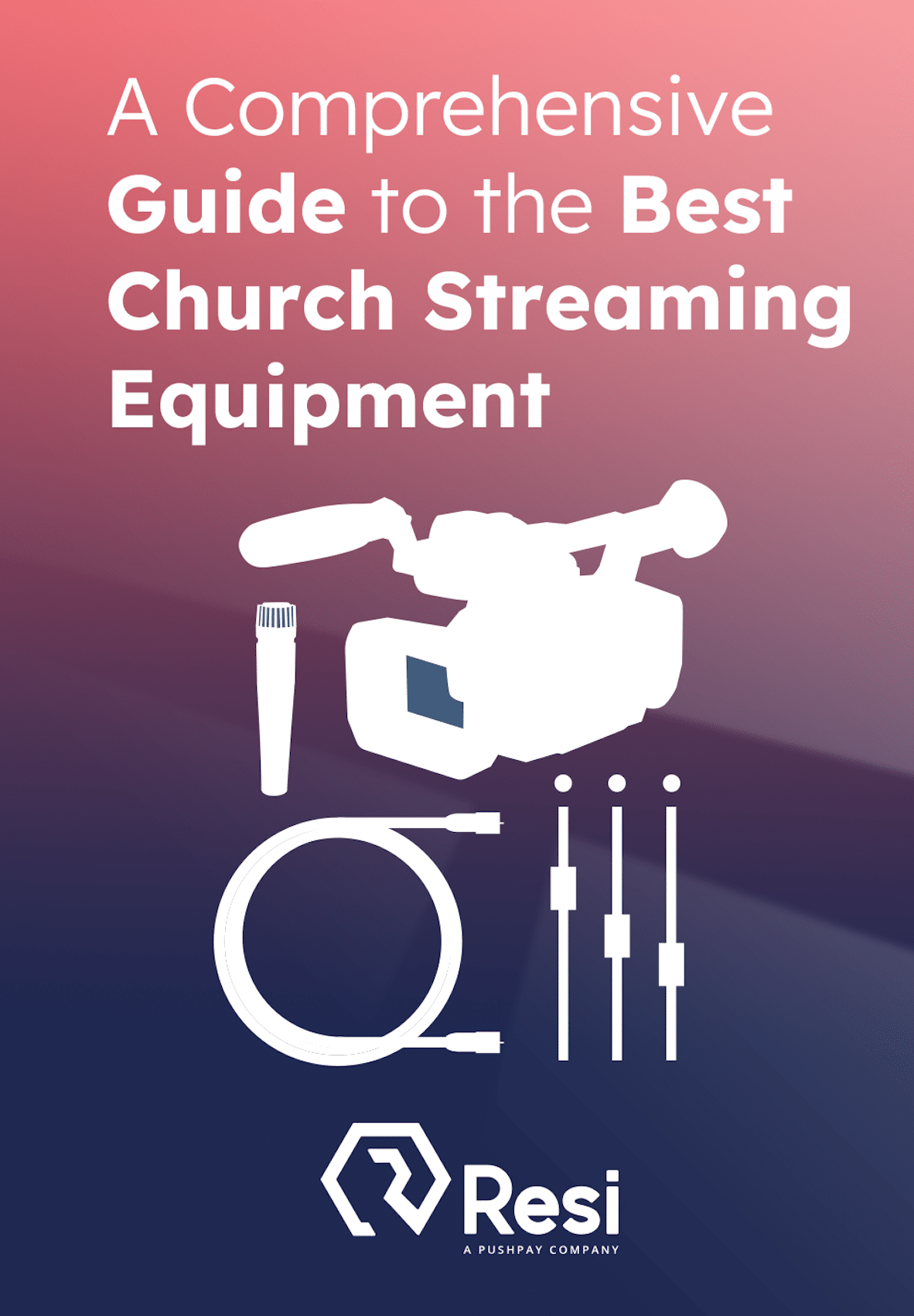
Much of the negativity surrounding online ministry has dissipated in this post-COVID church culture in which we operate. Once a cutting-edge concept among churches, Pushpay’s 2024 State of Church Tech Report revealed that 91% of churches are livestreaming, while 90% consider their ministry “hybrid” in nature.
Unfortunately, the prevalence of livestreaming hasn’t brought that clarity among church leadership concerning digital ministry. Often, a “physical-first” mentality takes precedence among churches, which causes the bare minimum to be done digitally while leadership waits for clarity before moving forward.
The Evolving Landscape of Church Ministry
Virtually every church staff has a “digital” advocate—someone passionate about digital ministry or relational discipleship utilizing digital technology.
Interestingly, it’s not always a techie who’s passionate about this. It could be a corporate professional grasping the possibilities, a small group leader envisioning digital connections, or a global mission pastor recognizing the potential for an international distribution network. Frequently, an enthusiastic volunteer willingly bears the digital responsibilities for the church.
Within every church exists a tech-savvy individual, yet a skeptic lingers in every congregation. Whether a member of the Elders, Deacons, or a pastor with a lack of understanding, some perceive digital as a threat to the physical church. They view the digital realm as an adversary to the church and at times, to God Himself.
A Week in the Life
See how Pushpay and Resi can transform how you engage with your congregation.
Download infographic
There are many reasons churches like yours should utilize digital technology, whether to reach people who have yet to make it to your building, streamline discipleship efforts, or connect people to Jesus who are nowhere near your building. The opportunities in the digital mission field are immense, so let’s talk about how we convince leadership to adopt and/or experiment with expanding digital ministry.
Understanding the Hesitations of Senior Leadership
Before you barge down the door of leadership and have an emotional heart-to-heart tirade about your 27 reasons the church should be pursuing a digital strategy, stop. Breathe. Let’s evaluate the situation.
Here are a few questions that will help you figure out how to handle the situation.
Question #1: Are the Objections “Theologically Based” in Leadership’s Mind?
It’s funny. If you ask pro-digital and anti-digital people, they’ll both use Hebrews 10:24-25 in their arguments: “And let us consider how we may spur one another on toward love and good deeds, not giving up meeting together.”
For some leadership, COVID forced them into a digital ministry model that made them uncomfortable. In their eyes, the lockdown put a negative tinge on online ministry. Now that the lockdown is over, they’re asking why would we want to continue digital ministry?
If their argument is grounded in their theology, ask yourself: “Do I have the respect of the leadership to change their theology?” Think of the years the pastor has spent studying and developing their theology. If you don’t have the proper level of respect (or relationship), you probably want to find someone to go into the conversation with you.
If the challenges to digital ministry are not theological, they are based on preferences. That’s good! Preferences are more accessible to change.
Preferences are merely opinions. They’re not always grounded in perceived Biblical facts and can be based on misconceptions. If this is the case, opinions can be swayed by information.
So, develop a heartfelt argument and state your case. But watch out. Sometimes, a preference is grounded in theological (or it’s a preference that leadership has labeled as a “theological”) opinion. If this happens, don’t argue whether it’s theological or not. You will need to have the conversation based on the theological rules.
Typical Challenges Church Leadership Will Ask About Digital Ministry
- Lazy people stay at home on Sundays. For church, we only count people who change out of their pajamas. – It’s true. Lazy people can attend online. But there are also many valid reasons people are not in the church building on Sunday 9 am. Don’t judge someone negatively because they stay tapped into your church digitally. This is a good thing. By the way, recognize that lazy people attend your physical church as well.
- Online creates consumeristic Christians. – It’s true. But the physical church creates consumeristic Christians, too. I’ll paraphrase James 1:22 a bit, where it says that we are not to be “Hearers of the word [online].” Instead, we must be “Doers of the word [in physical space].” Online is an amplifier. If you’re a consumeristic church physically, that will show up online. So, ask yourself, what type of church are you?
- Relationships aren’t real/genuine unless they involve interaction in physical space. – This argument often comes from an older generation that hasn’t experienced digital relationships or utilized digital tools. The younger generations, who are more native to digital technology, often do not feel this way. Also, people in corporate environments dealing with co-workers in different states or countries don’t feel this way. Biblically, we don’t see anything about the Holy Spirit being passed via air molecules. “Where two or more are gathered” (Matthew 18:20) can and does happen digitally.
- The Holy Spirit doesn’t work digitally. – This one always makes me smile because it’s absurd. Are we saying that God isn’t big enough to read and respond to what’s on a computer screen? That He can’t react to someone’s emotional or spiritual condition when they are typing on a keyboard or moving a mouse? Are we saying that the Internet inventors created a box God can’t or refuses to enter? Think about that. If man has created a space God cannot enter, then Satan has won! A God not on the Internet opens some major theological, world-altering issues.
Question #2: Why Are We Doing This? Using their Vision and Their Language to State Your Case
More than just sharing opinions, changing minds often requires stories to sway opinions. More specifically, stories of life change or stories of strategy from churches similar to yours, or ones from that next tier that your leadership wants to become.
Please don’t walk into your leadership telling stories and stats from “giga-churches”, especially if you are a 300-person generational church.
God is doing some incredible things through churches like Life.Church, but your church’s why (and your church leadership’s why) is most likely completely different from what Life.Church is doing. The challenge for you is to find churches with a mission/vision similar to yours and a similar size and celebrate their wins!
Even your posture in telling stories is not to brag or gloat about what other churches are doing. Remember the earlier challenge to “use your leadership’s language.” Your goal would be to say: “Our church has the opportunity to succeed in [doing whatever your mission is] by adopting a digital strategy. Churches like ours have adopted a similar strategy and have seen success doing it! Here’s a plan to experiment to get a proof of concept. Here’s how much it will cost and how much staff time we’ll need, and I’ve already pitched it to a dozen potential volunteers who are excited about it. Can we give this a try?”
Question #3: How Do We Test This? Creating a Pilot Project Proposal
One of the reasons your leadership doesn’t want to go “all in” with a digital strategy is the perception that they’re too busy, don’t have time, or don’t want more responsibility. Or, it’s a generational thing, and they don’t understand it!
None of these are wrong, necessarily. If these are true of your situation, you can certainly overcome these arguments over time. It does mean that, among other things, you will have to earn their trust.
Best Livestreaming Equipment
Discover what top-rated equipment we recommend adding to your church streaming toolkit.
Download for free!
You’ll need to understand that your church leadership might be more comfortable experimenting in small contexts before making the leap into more ambitious projects and strategies. Looking for some tips on developing your digital ministry experiment?
- Start small. Use free as much as possible. Get a simple proof of concept before you ask for big bucks or staffing. Don’t require much involvement from leadership.
- Stream services and talk about the people you meet. Typically, qualitative stories will be more potent initially than quantitative stats. Stories are your friend. Use stats to reinforce.
- Remember to use your leadership’s language. What do they value? Value that digitally, and tell them regularly how you’re succeeding.
- Involve Leadership as much as possible. Do not build this alone. Recruit staff and volunteers to be your first wave. People other than you will have a powerful voice as well.
- Don’t let your other job/responsibilities suffer. Running the experiment successfully cannot come to your other responsibilities’ detriment. Be successful on both fronts.
- When in doubt, start with the strategy your church does physically and then learn/iterate from that. Your physical strategy will likely not work digitally, but your leadership may need that proof of concept (the failure) to give freedom to do something else.
- Failure does not mean quitting. It means trying again. Learn from the experiment and develop a different process. Our priority is not to be correct but to see life change digitally. Change whatever you need to to see that happen.
- This will be a slow process. It needs to be. The journey is the reward, probably not for you, as you will likely hate the slow journey. The journey is the reward for your leadership. Internally, celebrate the wins as you see them grow to understand, appreciate, and support online ministry.
Let me tell you my story of how I violated virtually every one of these principles and saw my ministry crash and burn:
Several years ago (pre-COVID), I was hired to rebuild a church’s digital ministry. Leadership wanted to go digital but didn’t understand it. I was often told that they didn’t want to be involved digitally, so they gave me the freedom to run. I took it as a blessing and ran.
I built something epic. Pre-Covid, we were doing house churches all over the country. 51% of our online service attendance was outside of the state we were in. We were doing ASL interpretation and Spanish translation. Online groups exploded. We even launched an online children’s ministry. It was incredible!
Unfortunately, as the ministry increased digitally, so did financial need. When I asked for a budget increase, my leadership told me no. Their reason: “Jeff, we don’t understand what you’re doing.”
I paused the expansion of digital ministry for about six months, meeting weekly with leadership to help them understand the reasoning behind my decisions. Once they understood, they still said “no” to budget increase because the vision was built around my why, not the leadership’s why.
Leadership’s mission was to launch physical multi-site campuses. What I built was perceived, in many ways, to challenge the multisite vision. We ended up dissolving much of what was built, and I resigned from that church job, frustrated. Ironically, COVID caused the church to reinstate much of the ministry I built for them, and the church is still seeing ministry success today through it.
Leadership Is Not The Enemy
I chuckle whenever I tell that story about how God used me, like Moses, to take the church to the Promised Land of digital ministry, but then, like Moses, I wasn’t allowed to cross the border with them. God used it to teach me a lot about myself, primarily how to deal with leadership. If we pray through these leadership conversations, God will bless our conversations with a “yes” or give us the strength to deal with the “no.”
By the way, my senior pastor, at the time, was a non-techie Boomer. He didn’t understand technology. When he told me that he didn’t understand digital, it was my mistake to listen and agree. I should’ve found a common ground that he could have understood.
In hindsight, he was hugely evangelical. Connecting digital ministry to people who need Jesus would not have been that hard. I should’ve maximized his passion and found ways to amplify his passion digitally. Instead, I viewed myself as a warrior of digital, fighting battles for my view of digital when I should have been a co-laborer of the church’s vision representing the digital mission field. My biggest failure is found in that posture.
The Posture of Disruption in the Church
From Sunday to Every Day
Download our FREE ebook to find out how your church can measure success in this engagement-centric culture.
Download for free!
It’s easy to view yourself as a disruptor, someone who’s right, and everyone else is wrong. Whether that is true or not is irrelevant. You need leadership to agree with you; your posture and stance will speak volumes to them.
Can you be humble and a disruptor at the same time? Can leadership see the fruits of the spirit in you while you lead them through change? This is the challenge for you moving forward.








